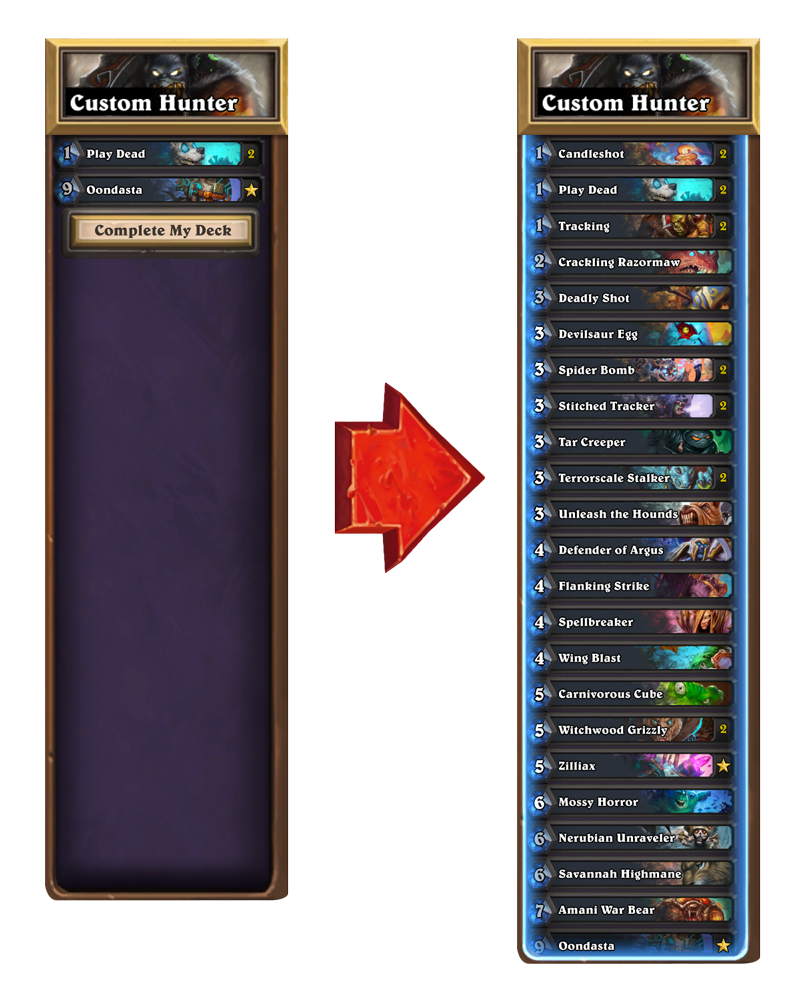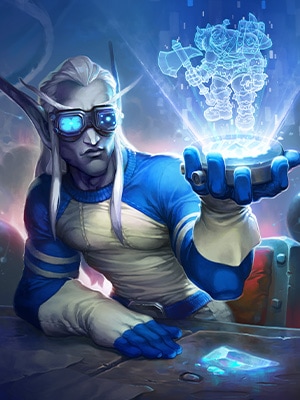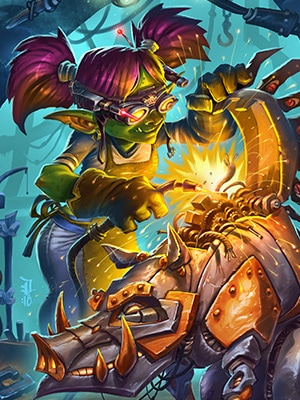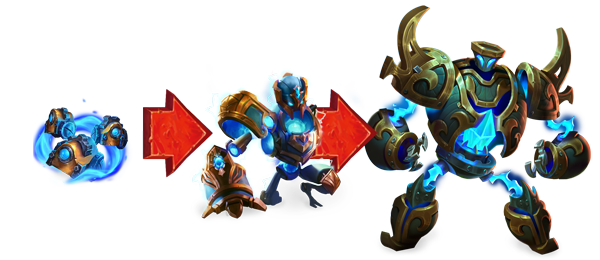
This article has been translated from the original article by Hearthstone Team Data Specialist, Tian. In the article, he shares about the new smart deck creation feature (Smart Deck Builder):

What is Smart Deck Builder?
Creating a new Hearthstone deck can be fun and exciting for experienced gamers. But if you’ve been away from Hearthstone for a while, are new to the game, or have limited time, and you need a little help turning your card collection into something you can proudly use to climb rank, then Smart Deck Builder is for you. It will ease the burden and allow you to join the match with a popular and effective deck with just a few mouse clicks!
To use Smart Deck Builder, start by creating a Standard deck from any class, using any card. Then click “Complete my deck”, or “Done”, the new feature will automatically select the remaining cards for your deck, based on the cards you have selected, and only use the cards currently in your collection. For example, if you choose Oondasta and Play Dead then let Hearthstone take care of the rest, Smart Deck Builder will consider many factors, then create the deck it considers as the strongest possible, for example the very popular Katherina Winterwisp Deathrattle Hunter deck.

Just simple as that. Start from an empty deck or pick a few cards you want to play, and Hearthstone will take care of the rest to create a great deck for you.

Operation method:
Let’s learn how Smart Deck Builder works. The Smart Deck Builder system has two tiers, each consisting of several sub-tiers that work together to autocomplete your deck. Now find out how each deck creates the deck you want…
First Deck Creation Floor: Generate Meta
To avoid misunderstandings, let’s go over the definition of “meta”. Meta is short for “meta-game”, showing current deck trends in rank. When trying to create a strong deck, many gamers will always think about the current meta and how the cards will help them succeed against the decks they may face. For example, in the weapon-heavy meta (common decks containing weapon cards and weapons), decks will often have Acidic Swamp Ooze or Gluttonous Ooze to destroy these weapons, thereby “countering” the meta. effective.

In the first deck creation layer (also known as the “meta layer”), Hearthstone will create the strongest deck possible based on what is popular in the meta, what you already have in your deck, and in your collection. your post. To determine what the meta is, we use a computer algorithm to group popular decks of the same type into small groups. Each subgroup represents a deck type used in the current meta, like “Secret Hunter”, “Dragon Priest”, “Odd Paladin” etc. The cards in each deck of each subgroup may be slightly different, but After all, they’re still the same deck. In the term “machine learning”, this process is called “clustering”. The data that feeds the algorithm covers millions of decks, and each deck counts as a data point, and for each data point is a hundred-dimensional vector. Using information from the clustering algorithm, combined with some other mathematical solutions, the algorithm will flexibly fill your deck until it runs out of space, or until the second “back-fill” tier is activated. active.
Since players with different skill levels will have different decks, playstyles and obstacles, the meta will also depend on your rank in the ladder. To deal with this, we have several sub-tiers in the meta-deck selection process. If you’re a rank 20 player, you might get a different meta deck than a Legend rank player. In addition, the meta report will be updated regularly to keep your meta deck up to date.
After we’ve tried creating an effective meta deck using the cards you initially added to your deck and the cards in your collection, Hearthstone moves on to the second deck creation…
Second deck creation: Back-fill
If the meta tier cannot find 30 decks from your collection, the second tier, or “back-fill”, will be activated. This deck ensures your deck is complete and uses your best cards. First, if the algorithm decides that it can’t generate an efficient meta deck from your collection, it will fall back to creating the strongest deck from the cards you have. The core idea of the back-fill algorithm is to create a balanced deck with good cards and a stable mana curve. Let’s talk about determining if a card is good for your deck.

Regardless of the potential for combos and combinations, each card has a “card power” stat that is used in the deck for each class. This number is not stable and always changes based on the current deck combination. However, determining the strength of the card is usually based on three factors:
- Impact on the game: How much does a card contribute to a deck’s win rate.
- For example, Water Elemental contributes a higher win probability than Dread Corsair to Mage.
- Mana Cost Group: A collection of cards with the same mana cost.
- If our goal is to find a card for a 1 or 2 mana pool, Argent Squire could be a good choice, but not nearly as good for a 5 mana pool.
- BILLIONTake too many cards from the same Mana Cost Team:
- If there are already 10 cards of a certain mana cost pool, we will restrict any more cards within that mana cost range, unless those cards are really much more important than the cards can. replace.
During the back-fill process, we dynamically choose the card with the best card strength to add to the deck. Mathematically, card strength is a function where the terms are calculated from contributing the odds of winning and the risk. Our goal in each search is to select the best card out of all possible solutions to optimize the given task.

Other Content, Regulations and Restrictions

In addition to advanced math and machine learning, we also apply a variety of quality assurance provisions in these two deck building tiers to make sure your deck is sound. For example, if you already have Prince Keleseth In an incomplete deck, Hearthstone will try to avoid 2 mana cost cards.
If you don’t add any cards to your deck and have Hearthstone continuously recommend decks in a short time, we’ll try to give you different decks with each click. However, this feature will not be activated unless the deck is completely empty.
As for the limit, Smart Deck Builder is currently only available for Standard deck creation, but support for Wild is something we’re working on. Additionally, the single card suggestion feature that pops up every time you create a deck containing cards not in your collection does not currently have Smart Builder applied.
Source: Playhearthstone
Source link: Hearthstone: Learn Smart Deck Builder Feature
– https://emergenceingames.com/
